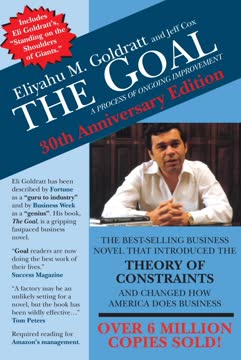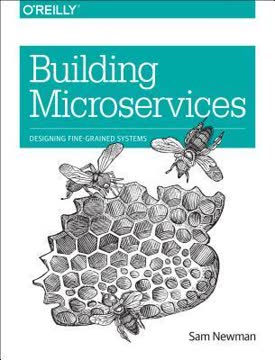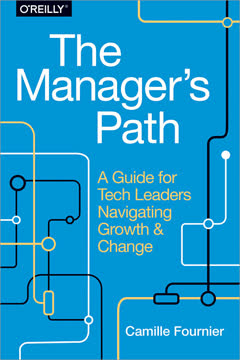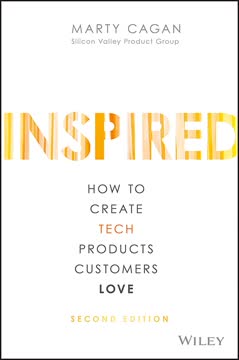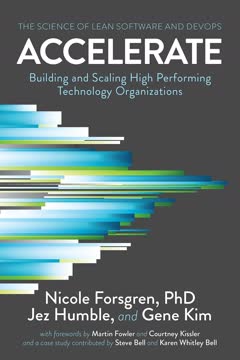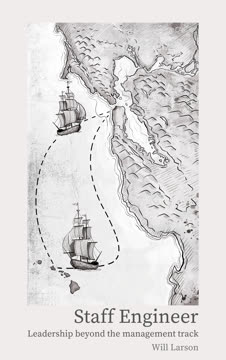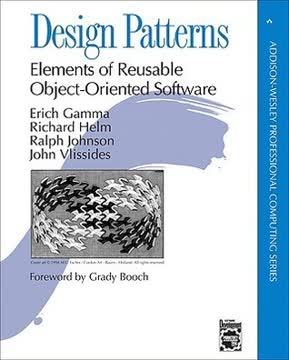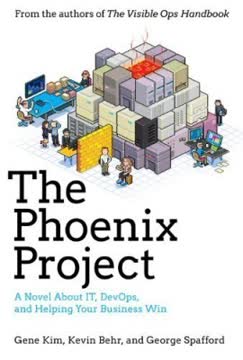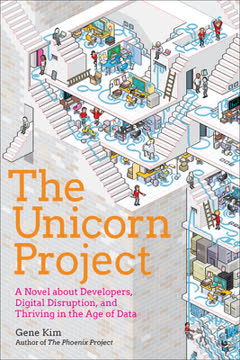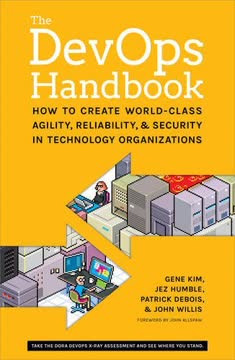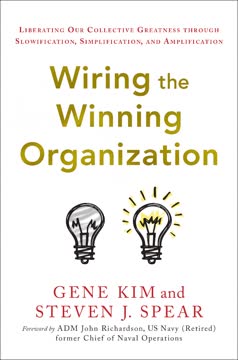つの重要なポイント
1. IT運用はビジネス成功の鍵であり、開発と統合されるべきである
「ITは単なる部門ではない。ITは会社全体として習得すべき能力である。」
ITは中核的なビジネス機能である。 多くの組織はITを必要悪やコストセンターと見なしているが、実際には顧客に価値を提供するための中心的な役割を果たしている。ITは開発やビジネス戦略と緊密に統合される必要がある。
DevOpsの原則がギャップを埋める。 開発と運用の間のサイロを打破することで、企業はソフトウェアをより速く、より信頼性高く提供できるようになる。これには文化的な変革、共有の所有権、チーム間のインセンティブの調整が必要である。
主要なDevOpsの実践:
- 継続的インテグレーションとデリバリー
- コードとしてのインフラ
- 自動テストとデプロイ
- 共有のメトリクスとモニタリング
- 非難のない事後分析
2. 効果的な変更管理はリスクを減らし、安定性を向上させる
「製品の定義、設計、開発の最初の部分までフィードバックループを作る必要がある。」
管理が不十分な変更は障害を引き起こす。 多くのITインシデントは、適切に計画、テスト、またはコミュニケーションされていない変更から生じる。堅牢な変更管理プロセスはリスクを減少させる。
コントロールとアジリティのバランスを取る。 変更管理は重要だが、過度に官僚的なプロセスはイノベーションを阻害する可能性がある。目標は、迅速かつ頻繁な変更を可能にしながら安定性を維持することである。
効果的な変更管理の要素:
- 明確なポリシーと手順
- リスク評価と軽減
- テストと検証
- ロールバックプラン
- 実施後のレビュー
3. 制約を特定し最適化してシステム全体のパフォーマンスを向上させる
「日々の作業を改善することは、日々の作業を行うことよりも重要である。」
ボトルネックを見つける。 どのシステムにも、全体のスループットを制限する制約が存在する。この制約を特定し最適化することで、最大の改善が得られる。
制約を高める。 一度特定されたら、その制約の効率を最大化することに集中する。これにはタスクの自動化、割り込みの削減、またはキャパシティの追加が含まれる。
制約を最適化する手順:
- システムの制約を特定する
- 制約を活用する(効率を最大化する)
- 他のすべてを制約に従わせる
- 制約を高める(キャパシティを増やす)
- 新しい制約に対してプロセスを繰り返す
4. バッチサイズを減らし、デプロイ頻度を増やしてアジリティを向上させる
「機能は常にギャンブルである。運が良ければ、10%が望ましい利益をもたらす。したがって、これらの機能を市場に出し、テストする速度が速ければ速いほど良い。」
小さなバッチはリスクを減らす。 大規模で頻度の低いデプロイは本質的にリスクが高く、問題を特定して修正するのが難しい。小さく、より頻繁なデプロイは、迅速なフィードバックと反復を可能にする。
継続的デリバリーは実験を可能にする。 迅速かつ安全にデプロイできると、多くの小さな実験を行って機能やビジネス成果を最適化することが可能になる。
小さなバッチサイズの利点:
- 市場投入までの時間が短縮される
- デプロイのリスクが減少する
- フィードバックループが迅速化する
- 品質が向上する
- ピボットの能力が向上する
5. プロセスを自動化してエラーを減らし効率を向上させる
「人間をデプロイ業務から外す。」
手動プロセスはエラーが発生しやすい。 人間は特にプレッシャーの下で反復的なタスクを行うときにミスを犯す。自動化はエラーを減らし、より価値の高い作業に時間を割くことができる。
インフラをコードとして扱う。 バージョン管理されたコードを通じてインフラを管理することで、環境間の一貫性を確保し、変更を簡単に再現またはロールバックできる。
自動化の主要分野:
- 環境のプロビジョニング
- コードのデプロイ
- テスト
- モニタリングとアラート
- インシデント対応
6. ビジネス価値に基づいて優先順位を付け、進行中の作業を管理する
「コードが本番環境に入るまで、実際には価値が生成されていない。なぜなら、それはシステム内に滞留しているWIPに過ぎないからだ。」
成果に焦点を当てる。 活動メトリクスにとらわれがちだが、重要なのはビジネスや顧客に実際の価値を提供することである。
進行中の作業(WIP)を制限する。 過剰なWIPはコンテキストスイッチング、遅延、品質の低下を引き起こす。WIPを制限することで、フローを改善しサイクルタイムを短縮できる。
作業を管理するための技術:
- ワークフローを可視化するカンバンボード
- 過負荷を防ぐWIP制限
- 定期的な優先順位付け会議
- 「完了」の明確な定義
- サイクルタイムとスループットの測定
7. 継続的な改善と学習の文化を育む
「日々の作業を改善することは、日々の作業を行うことよりも重要である。」
実験を奨励する。 新しいことを試し、失敗から学ぶことが安全な環境を作り出す。これがイノベーションと継続的な改善を促進する。
練習が完璧を作る。 定期的なドリルやシミュレーションは、チームがインシデントに備え、その対応能力を向上させるのに役立つ。
学習を促進する方法:
- 非難のない事後分析
- 定期的な振り返り
- イノベーションプロジェクトのための専用時間
- クロストレーニングとスキル共有
- 外部カンファレンスへの参加
8. サイロを打破し、部門間のコミュニケーションを改善する
「開発と運用が協力し、QAやビジネスと共に働くことで、驚くべき成果を達成できるスーパー部族になる。」
サイロは進捗を妨げる。 部門が孤立して運営されると、目標の不一致、コミュニケーションの断絶、最適でない結果が生じる。
共有の目標とメトリクスを作成する。 チーム間のインセンティブを調整し、全体的なビジネス成果に焦点を当てることで、協力を促進する。
サイロを打破するための戦略:
- クロスファンクショナルチーム
- 共有のオンコール責任
- 定期的な部門間会議
- ジョブローテーションプログラム
- 協力ツールとプラットフォーム
9. バリューストリーム全体を理解し最適化する
「作業センターの監督者のように考えるのをやめる必要がある。もっと大きく、工場長のように考える必要がある。」
バリューストリームをマップする。 顧客に価値を提供するためのエンドツーエンドのプロセスを理解することで、ボトルネックや最適化の機会を特定できる。
フローを最適化する。 リードタイムを短縮し、システム全体の効率を向上させることに焦点を当てる。
バリューストリームを最適化する手順:
- 現在の状態をマップする
- 無駄とボトルネックを特定する
- 将来の状態を設計する
- 改善を実施する
- 測定し、反復する
10. 安定性とイノベーションのバランスを取り、ビジネス成長を促進する
「ビジネスのアジリティは単なる速度ではない。市場の変化を検出し対応する能力と、より大きく計算されたリスクを取る能力に関するものである。」
安定性がイノベーションを可能にする。 安定した、よく管理されたITインフラは、迅速な実験とイノベーションの基盤を提供する。
計算されたリスクを受け入れる。 安定性は重要だが、成長にはスマートなリスクを取ることが必要である。安全な実験と迅速な学習を可能にするシステムを作り出す。
安定性とイノベーションのバランスを取るための戦略:
- 段階的なロールアウトのためのフィーチャーフラグ
- A/Bテストフレームワーク
- レジリエンスを向上させるためのカオスエンジニアリング
- 従業員のためのイノベーション時間(例:20%時間)
- 技術的負債とモダナイゼーションのニーズの定期的なレビュー
最終更新日:
FAQ
What's The Phoenix Project about?
- IT and Business Integration: The Phoenix Project by Gene Kim is a novel that delves into the challenges of integrating IT operations with business management. It follows Bill Palmer, who is unexpectedly promoted to VP of IT Operations at Parts Unlimited.
- DevOps Principles: The book introduces key DevOps principles, emphasizing collaboration between development and operations teams to improve efficiency and reduce time to market.
- Crisis Management: Bill navigates various crises, such as network outages and a failed payroll system, which serve as metaphors for larger organizational issues, highlighting the importance of communication and process management.
Why should I read The Phoenix Project?
- Real-World Application: The book provides practical insights into managing IT operations and implementing DevOps practices, valuable for IT professionals, managers, and executives.
- Engaging Storytelling: The novel format makes complex concepts accessible and engaging, allowing readers to relate to the characters and their struggles.
- Cultural Shift: It encourages a cultural shift within organizations, advocating for continuous improvement, learning from failures, and fostering collaboration across departments.
What are the key takeaways of The Phoenix Project?
- Importance of Communication: Effective communication is crucial for successful project management and crisis resolution, ensuring all stakeholders are informed and involved.
- Focus on Flow: Managing work in progress (WIP) is essential to deliver value efficiently, helping organizations identify bottlenecks and improve productivity.
- Continuous Improvement: The book advocates for a culture of continuous improvement, where teams learn from both failures and successes to adapt and enhance their ability to deliver quality products.
What is the "Three Ways" framework in The Phoenix Project?
- First Way - Flow: Focuses on optimizing the flow of work from Development to IT Operations, emphasizing reduced batch sizes and improved delivery speed.
- Second Way - Feedback: Highlights the importance of feedback loops in the development process, encouraging learning from both failures and successes.
- Third Way - Continuous Learning: Promotes a culture of experimentation and learning, emphasizing resilience and adaptability in the face of challenges.
What specific methods or advice does The Phoenix Project offer?
- Drum-Buffer-Rope: A method to manage work flow to the constraint in an organization, ensuring the bottleneck resource is always utilized effectively.
- Kanban Boards: Highlighted as a visual management tool to track work and manage changes, helping teams prioritize tasks and identify potential issues.
- Blameless Postmortems: Conducting blameless postmortems after incidents fosters a culture of learning and improvement, preventing future issues.
What are the best quotes from The Phoenix Project and what do they mean?
- “You can’t improve what you don’t measure.”: Emphasizes the importance of tracking performance metrics to identify areas for improvement.
- “The goal of IT is to support the business.”: Underscores IT's primary purpose within an organization, aligning efforts with business objectives.
- “Every improvement not made at the constraint is an illusion.”: Highlights the need to focus on the bottleneck resource, as improvements elsewhere may not yield meaningful results.
How does The Phoenix Project illustrate the concept of DevOps?
- Collaboration Between Teams: Showcases how breaking down silos between development and operations teams can streamline processes and reduce delivery time.
- Cultural Change: Emphasizes the need for a cultural shift to embrace DevOps principles, promoting continuous improvement and shared responsibility.
- Feedback Loops: Illustrates the importance of establishing feedback loops to quickly identify and address issues, enhancing responsiveness to changing requirements.
What challenges does Bill Palmer face in The Phoenix Project?
- Crisis Management: Bill manages multiple crises, including network outages and a failed payroll system, while implementing changes to improve IT operations.
- Corporate Politics: Faces political challenges with various stakeholders, complicating efforts to drive change and gain support for initiatives.
- Resource Constraints: Struggles with limited resources and the need to prioritize projects effectively, balancing ongoing operations with urgent projects like Phoenix.
How does The Phoenix Project address the issue of unplanned work?
- Definition of Unplanned Work: Defined as work that disrupts planned activities, such as incidents and emergencies, leading to chaos within an organization.
- Impact on Productivity: Unplanned work consumes resources and prevents teams from focusing on primary objectives, emphasizing the need to minimize it.
- Strategies for Management: Suggests implementing processes and tools, like incident response protocols, to better manage unplanned work and reduce its impact.
What role does Brent play in The Phoenix Project?
- Key Resource: Brent is a highly skilled engineer, critical to the IT Operations team, but his expertise creates a bottleneck as others rely on him.
- Impact on Workload: His involvement in various projects leads to increased unplanned work, disrupting planned activities and highlighting over-reliance on a single individual.
- Need for Knowledge Transfer: Emphasizes the importance of knowledge transfer and documentation to prevent dependency on Brent, reducing risk of a single point of failure.
How does The Phoenix Project depict the relationship between IT and business?
- Alignment of Goals: Illustrates the need for IT to align its objectives with business goals, ensuring technology supports overall performance and customer satisfaction.
- Communication and Collaboration: Emphasizes effective communication and collaboration between IT and business leaders for successful outcomes.
- Shared Responsibility: Highlights shared responsibility for outcomes between IT and business units, working together to deliver projects successfully.
What lessons can be learned from The Phoenix Project?
- Value of Process Improvement: Underscores the importance of continuously improving processes to enhance efficiency and effectiveness.
- Importance of Teamwork: Highlights the significance of teamwork and collaboration in achieving organizational goals, fostering a culture of cooperation.
- Need for Adaptability: Teaches that organizations must be adaptable and responsive to change, essential for long-term success in a fast-paced environment.
レビュー
フェニックス・プロジェクトは賛否両論の評価を受けている。多くの読者はITの課題を現実的に描写し、DevOpsの原則を理解するための教育的価値を称賛している。読者は魅力的なストーリーテリング形式を評価しているが、文章の質やキャラクターの発展に対する批判もある。IT専門家はこの本を共感できるものとして洞察に満ちたものと感じているが、非IT読者は技術的な内容に苦労するかもしれない。批評家は、この本が複雑な問題を単純化しすぎており、非現実的な解決策を推奨していると主張している。それにもかかわらず、多くの読者はこの本をIT運用と管理について学ぶための魅力的で価値のあるものと見なしている。
The Phoenix Project Series
Similar Books
